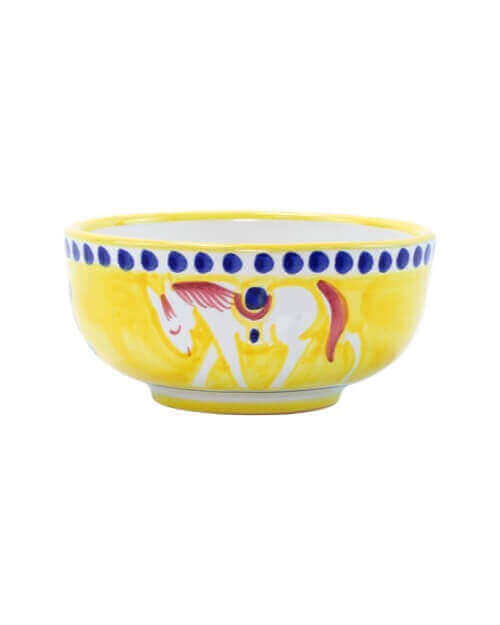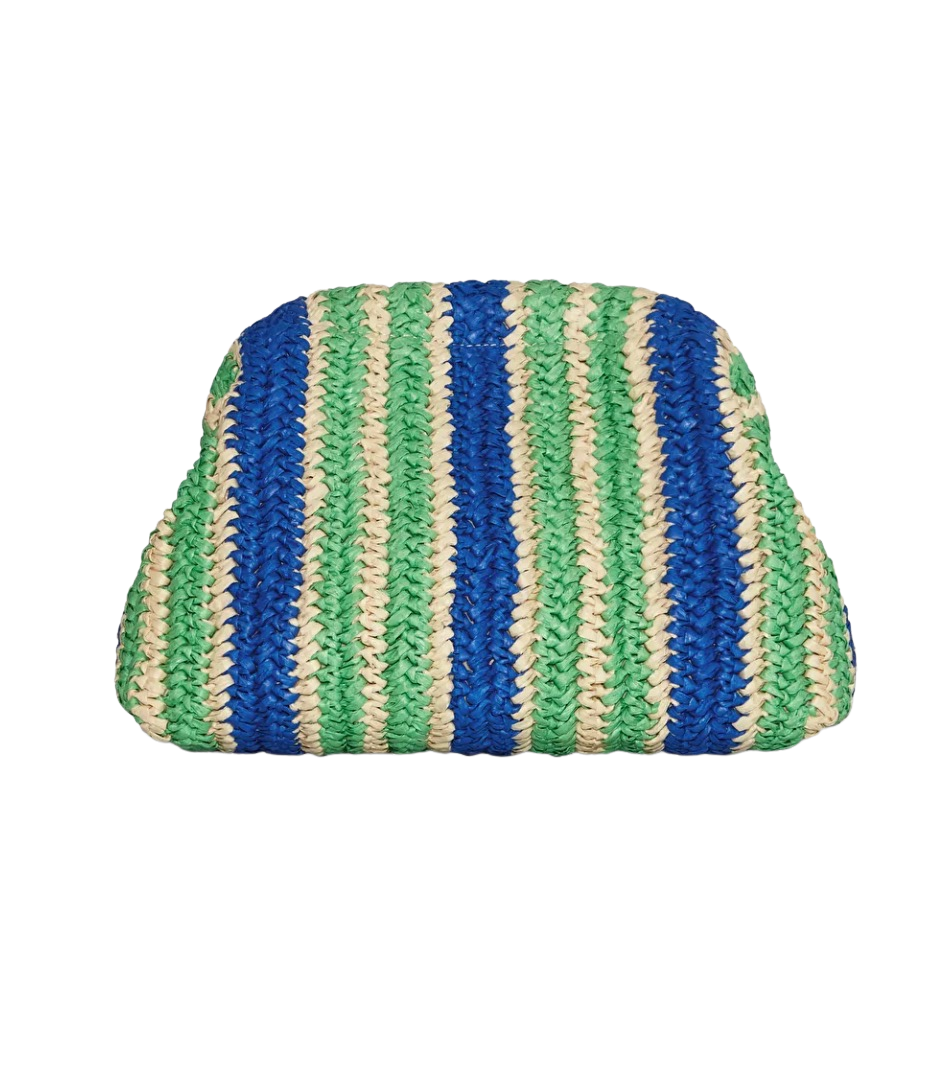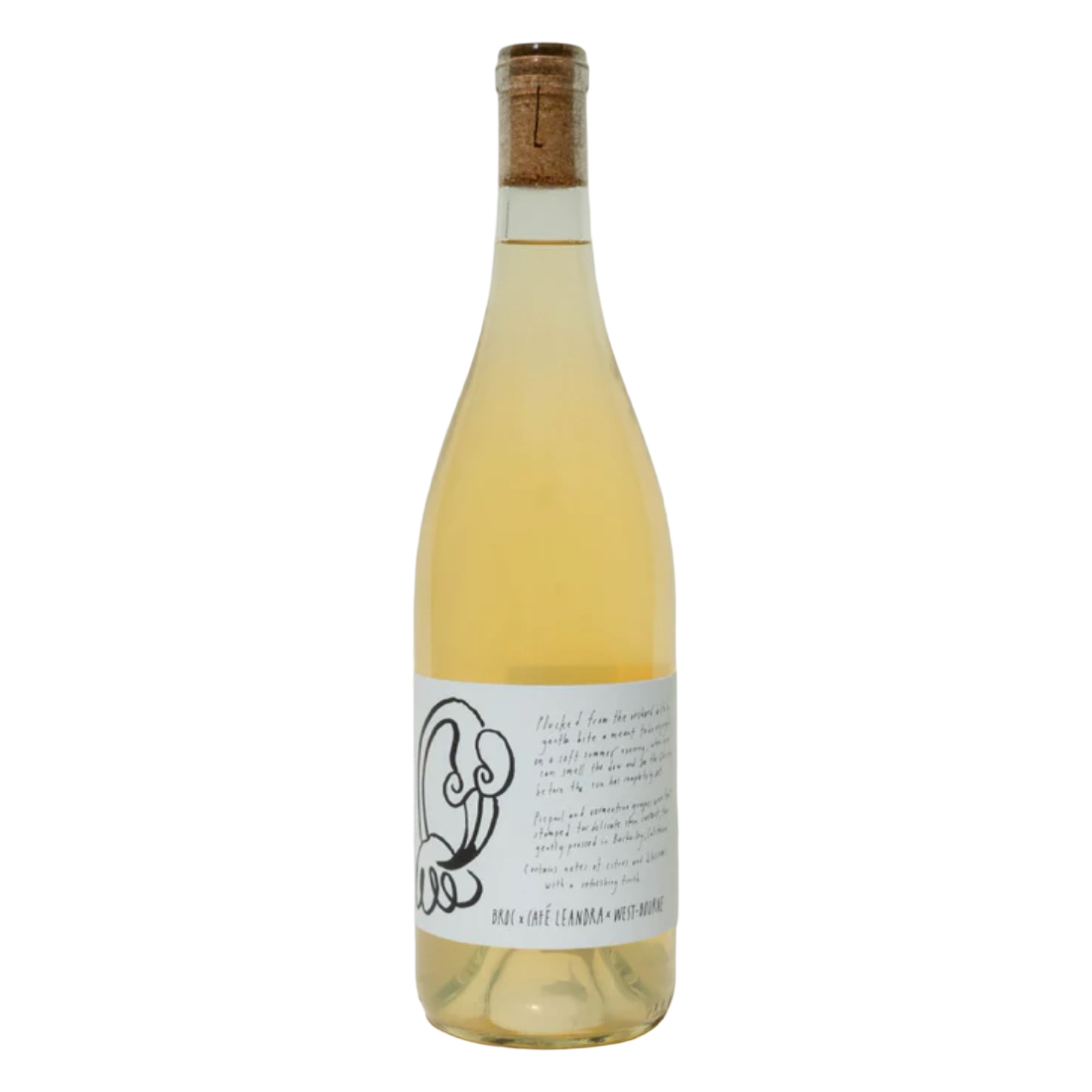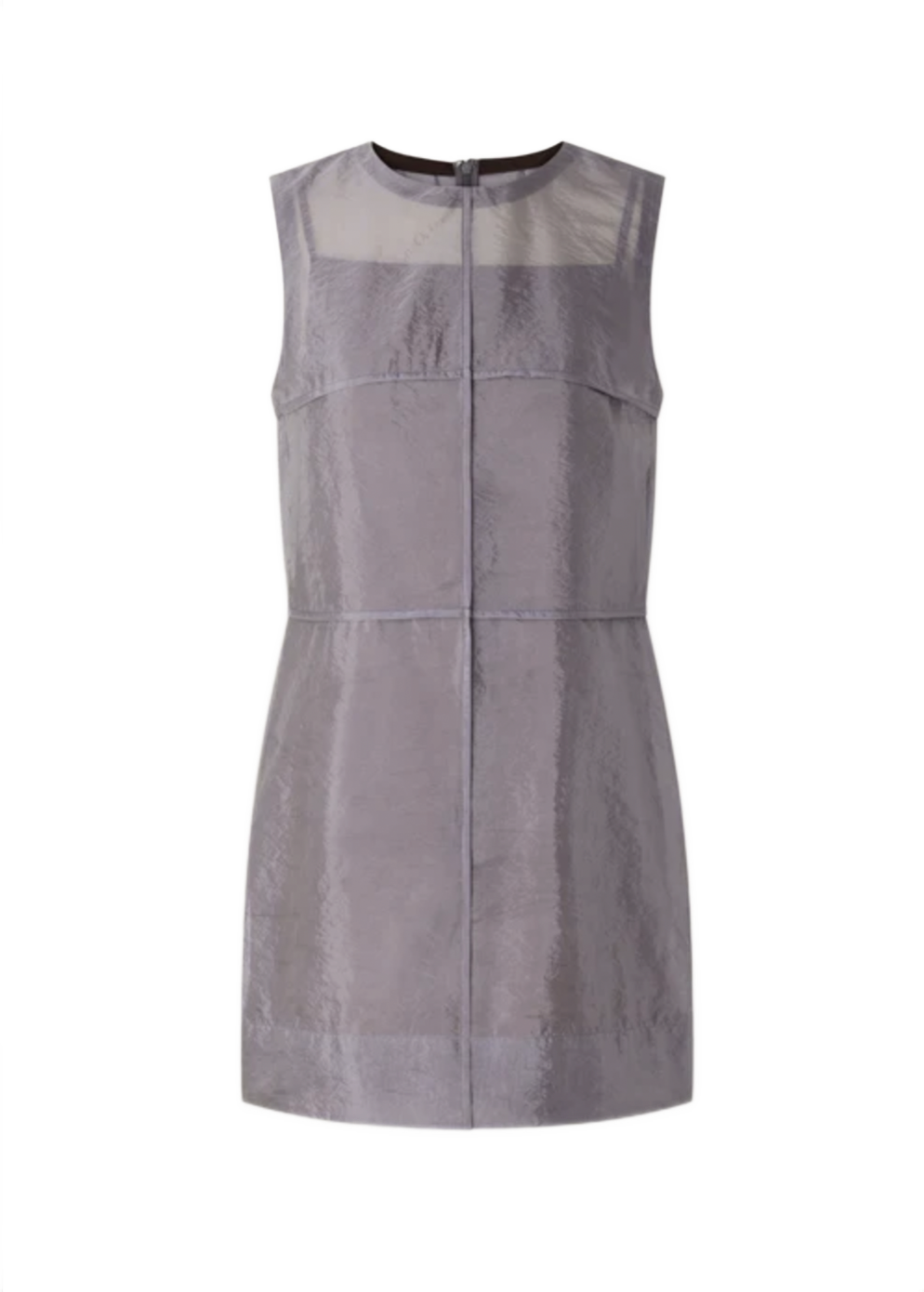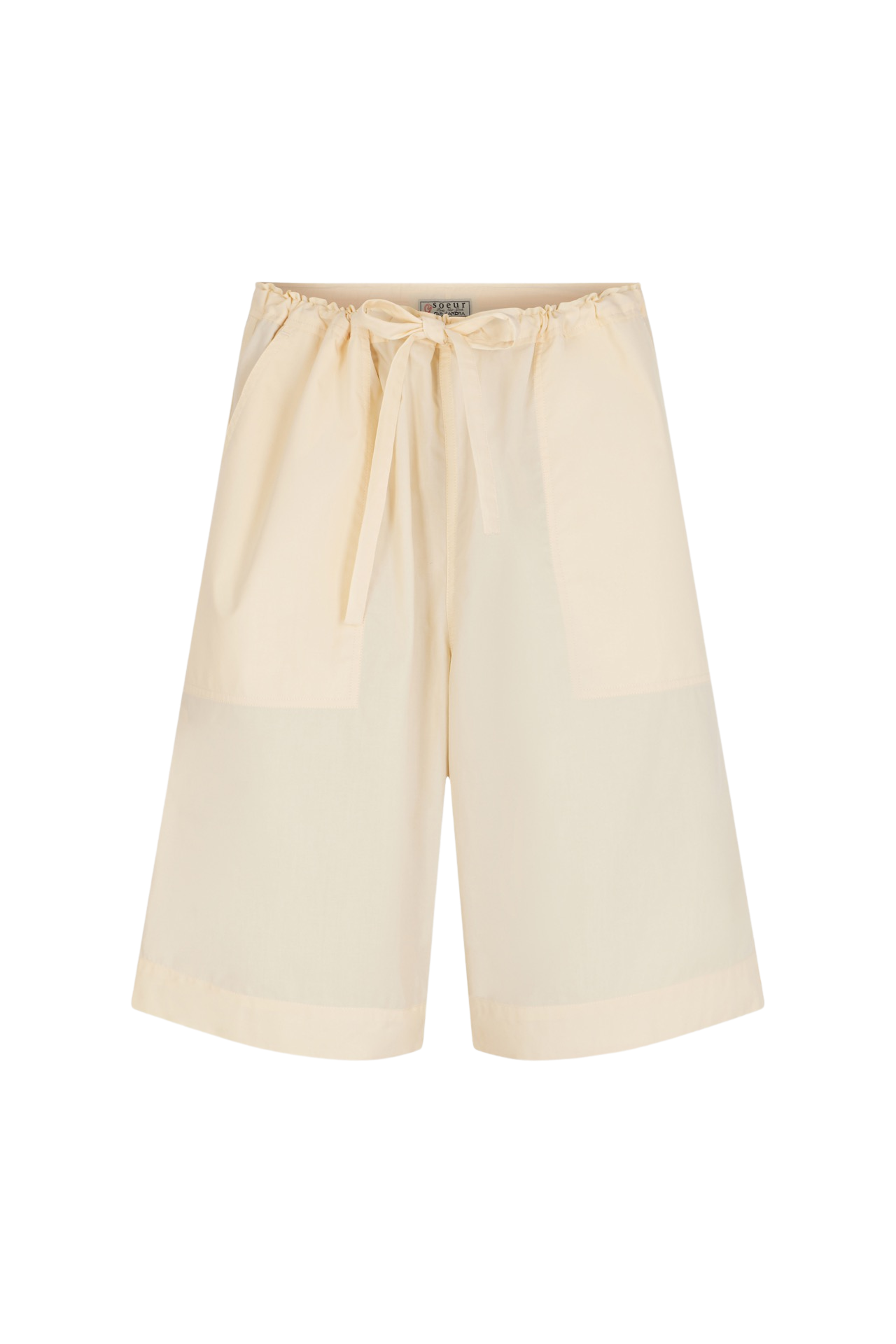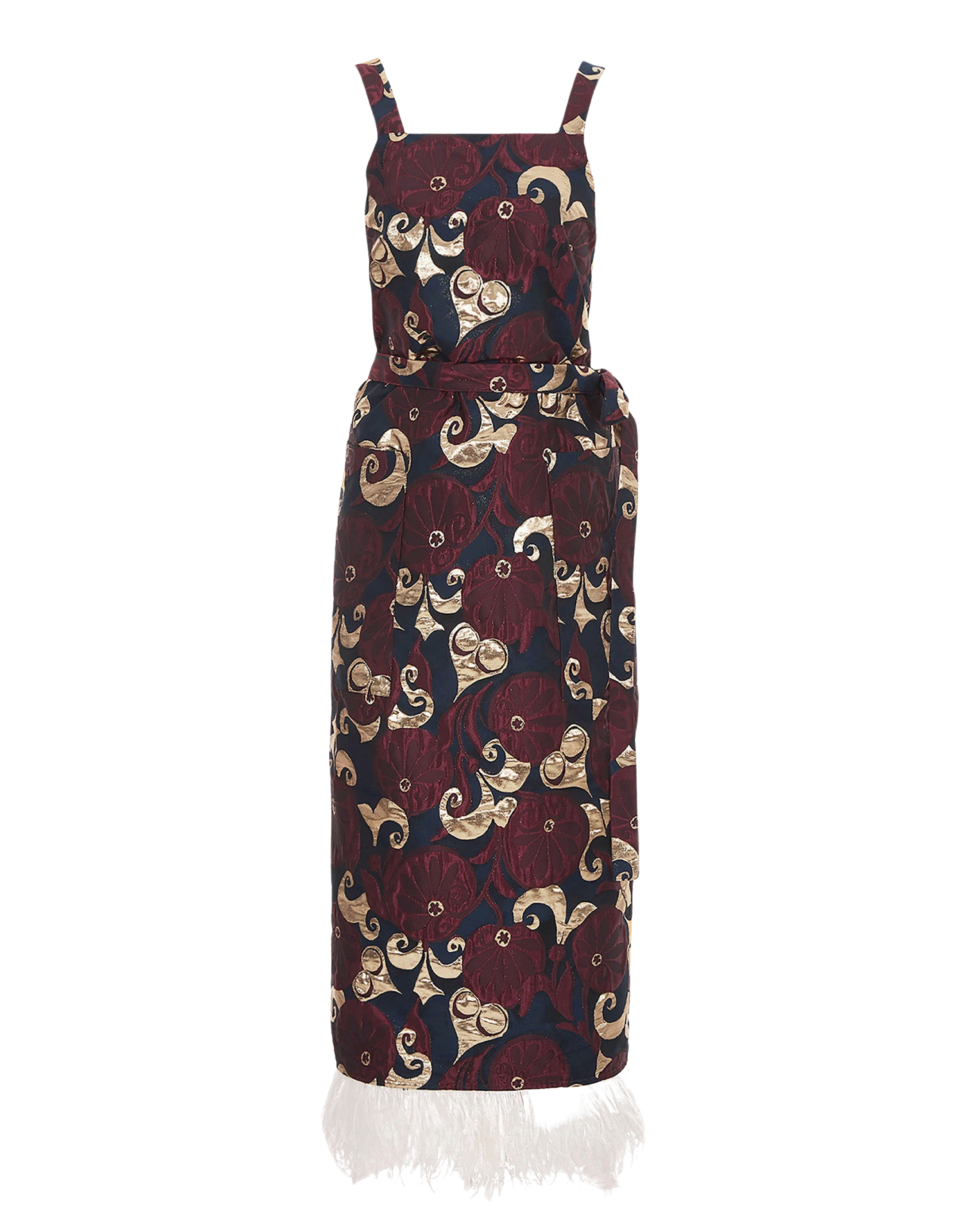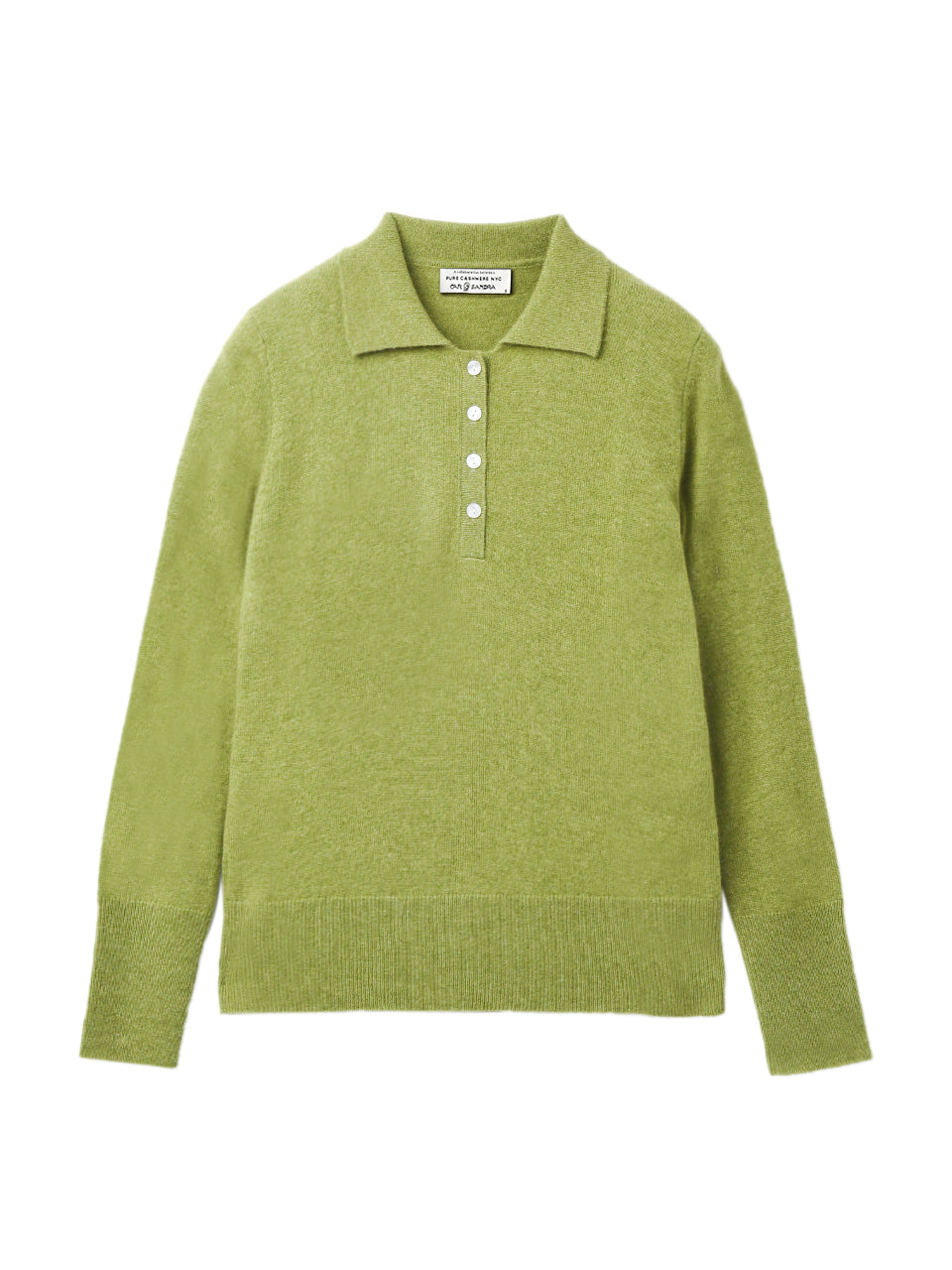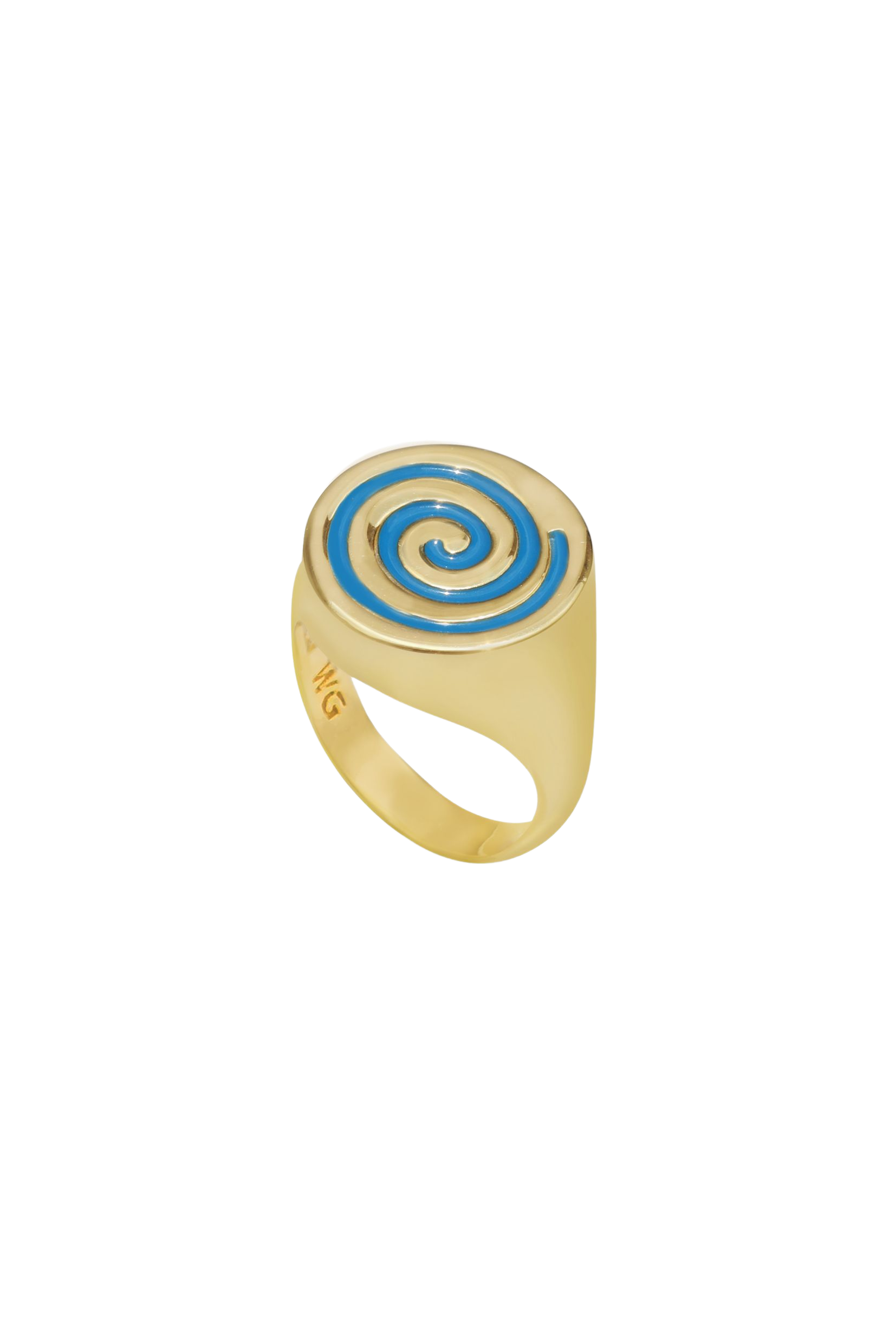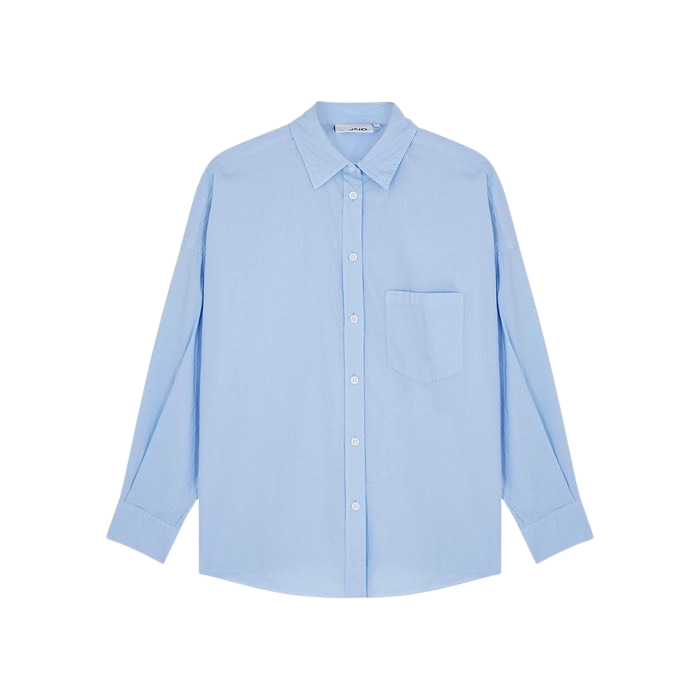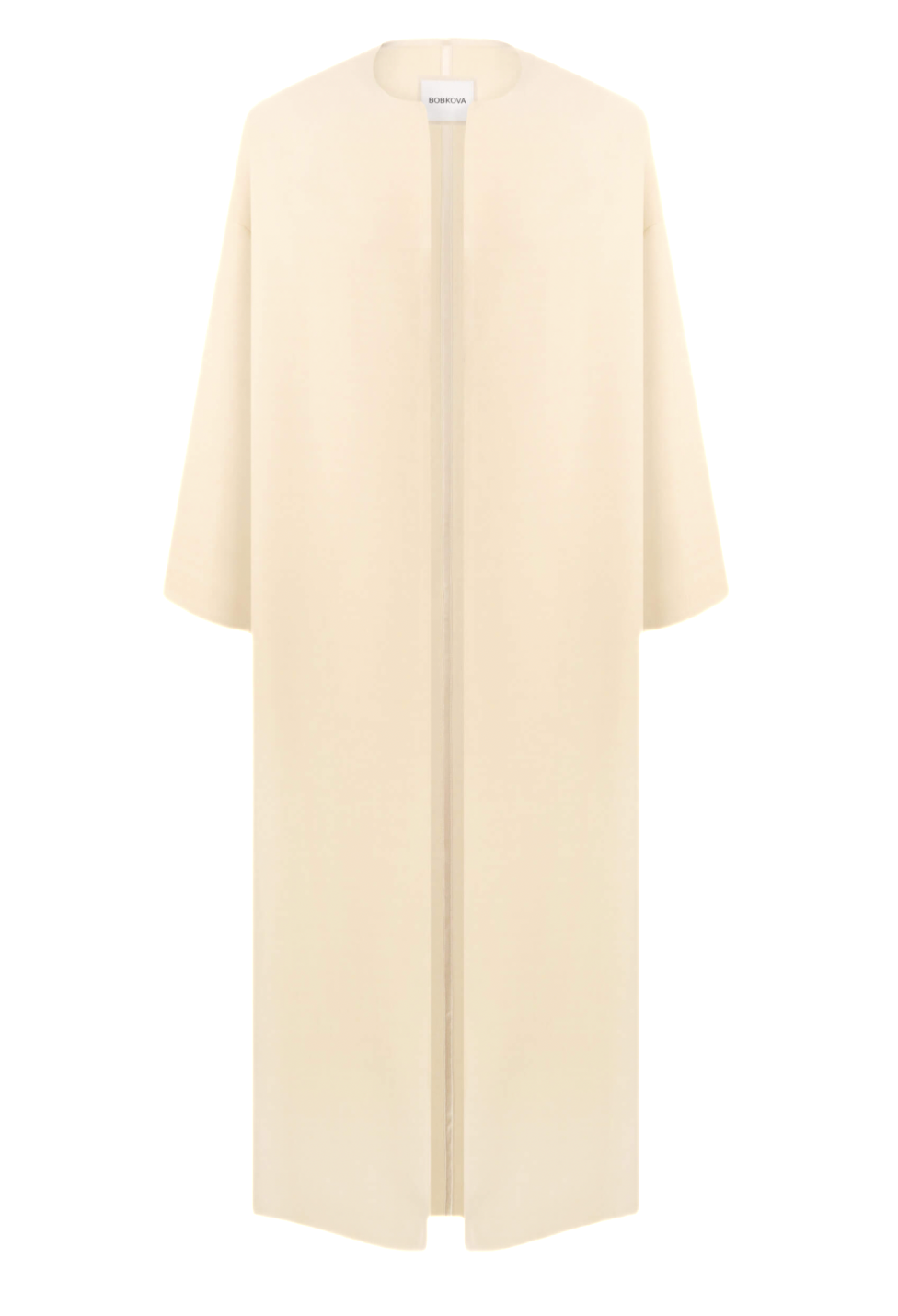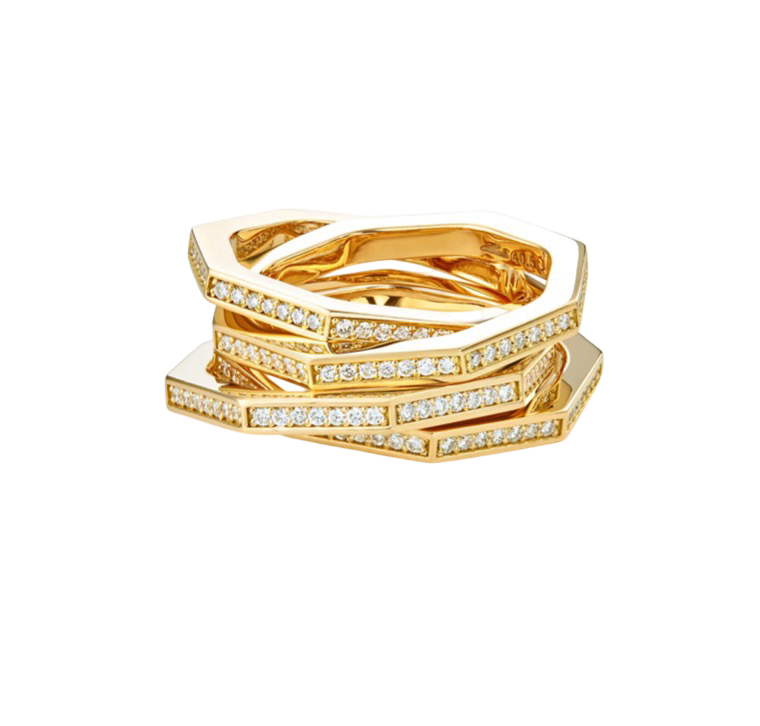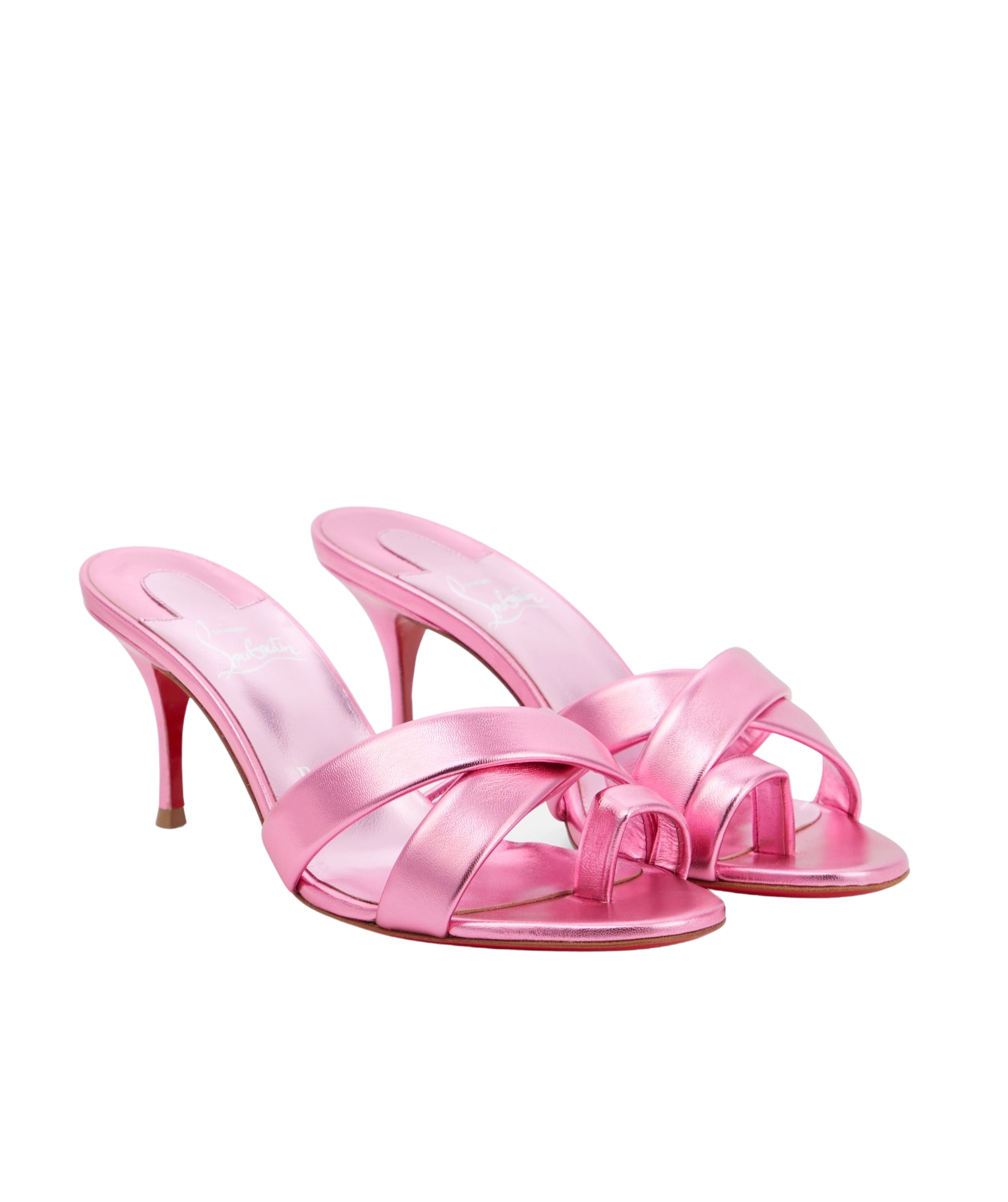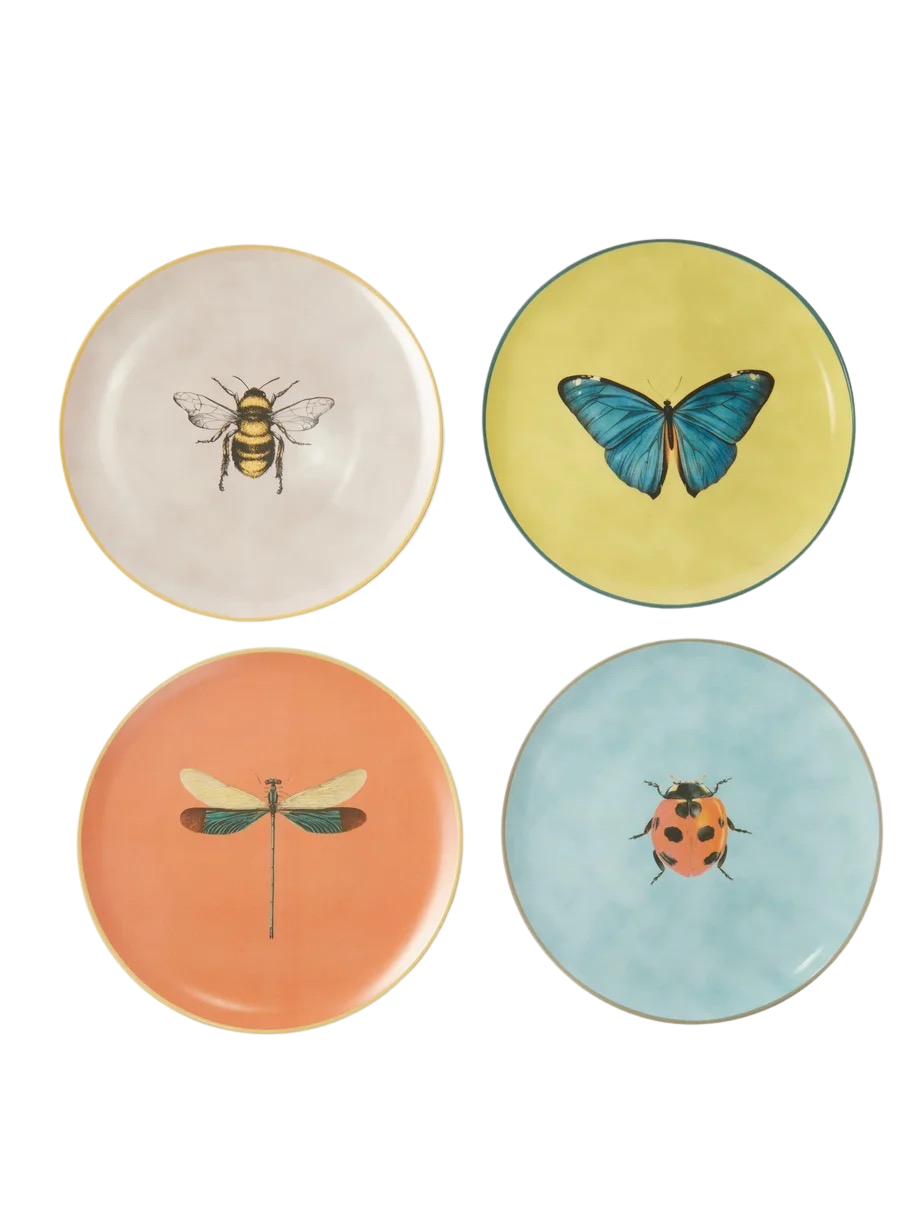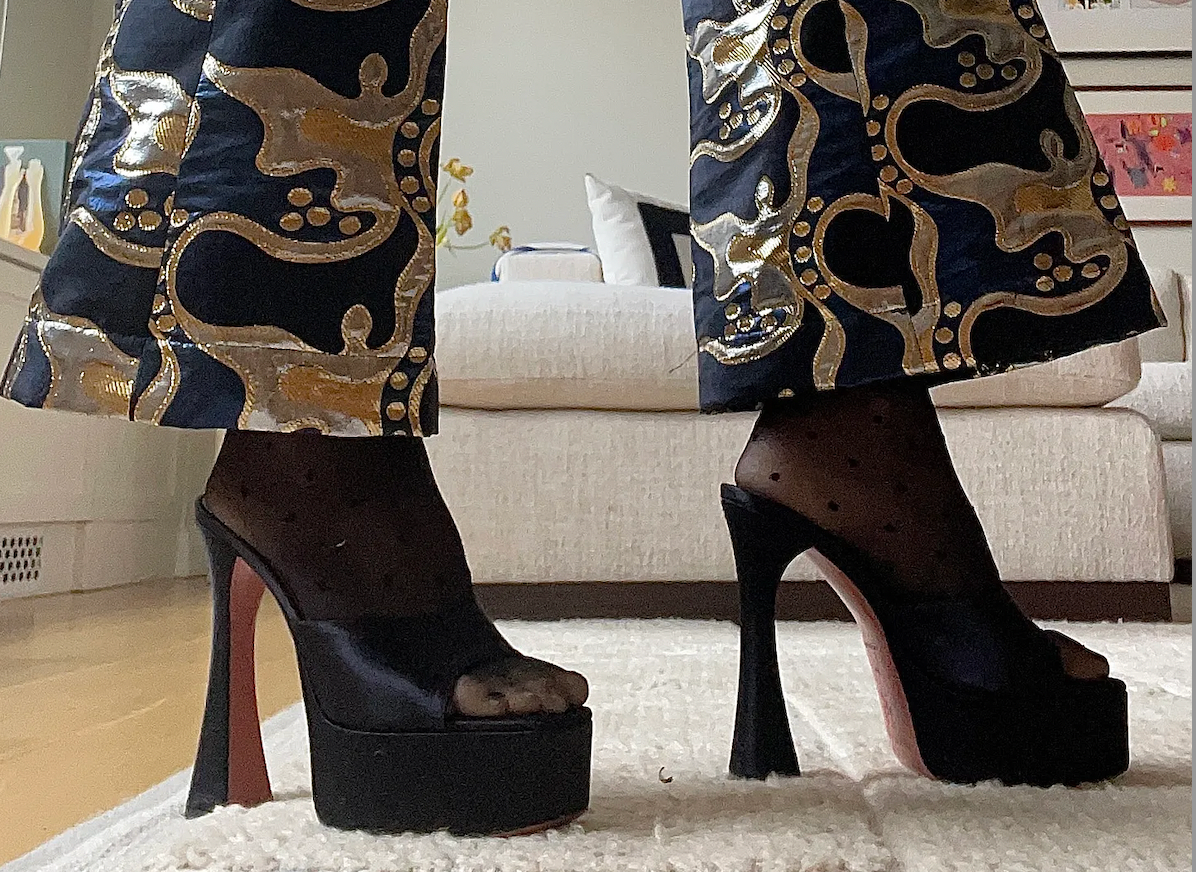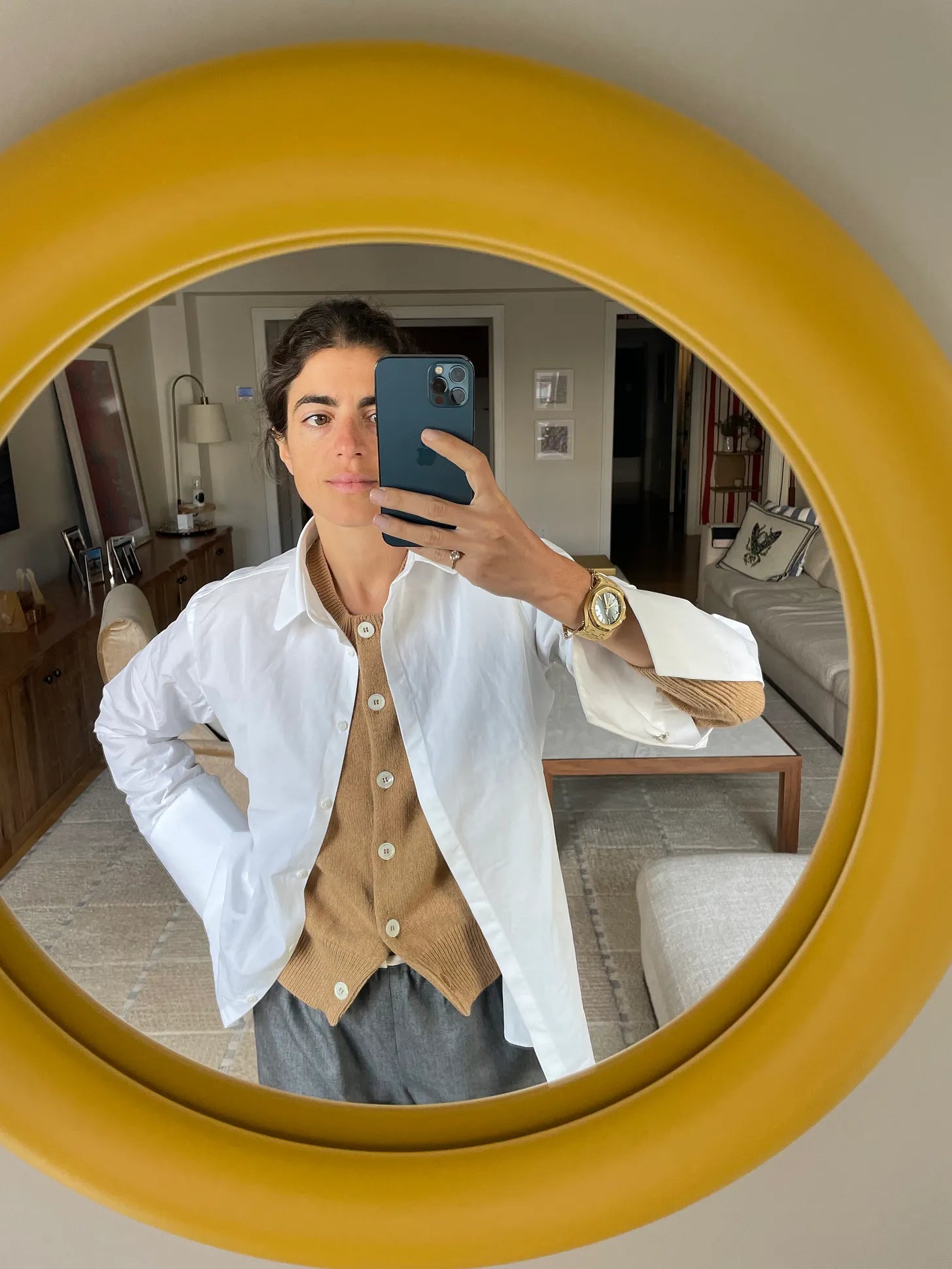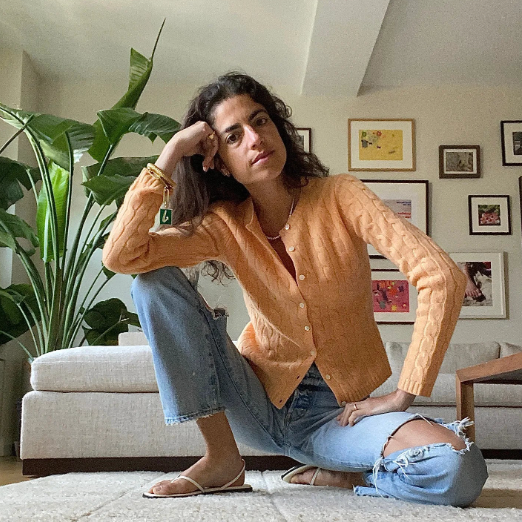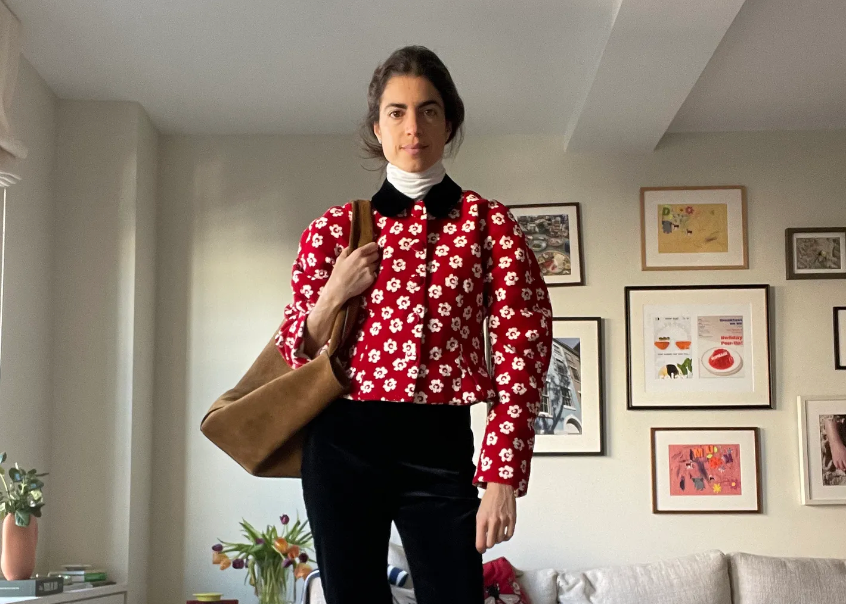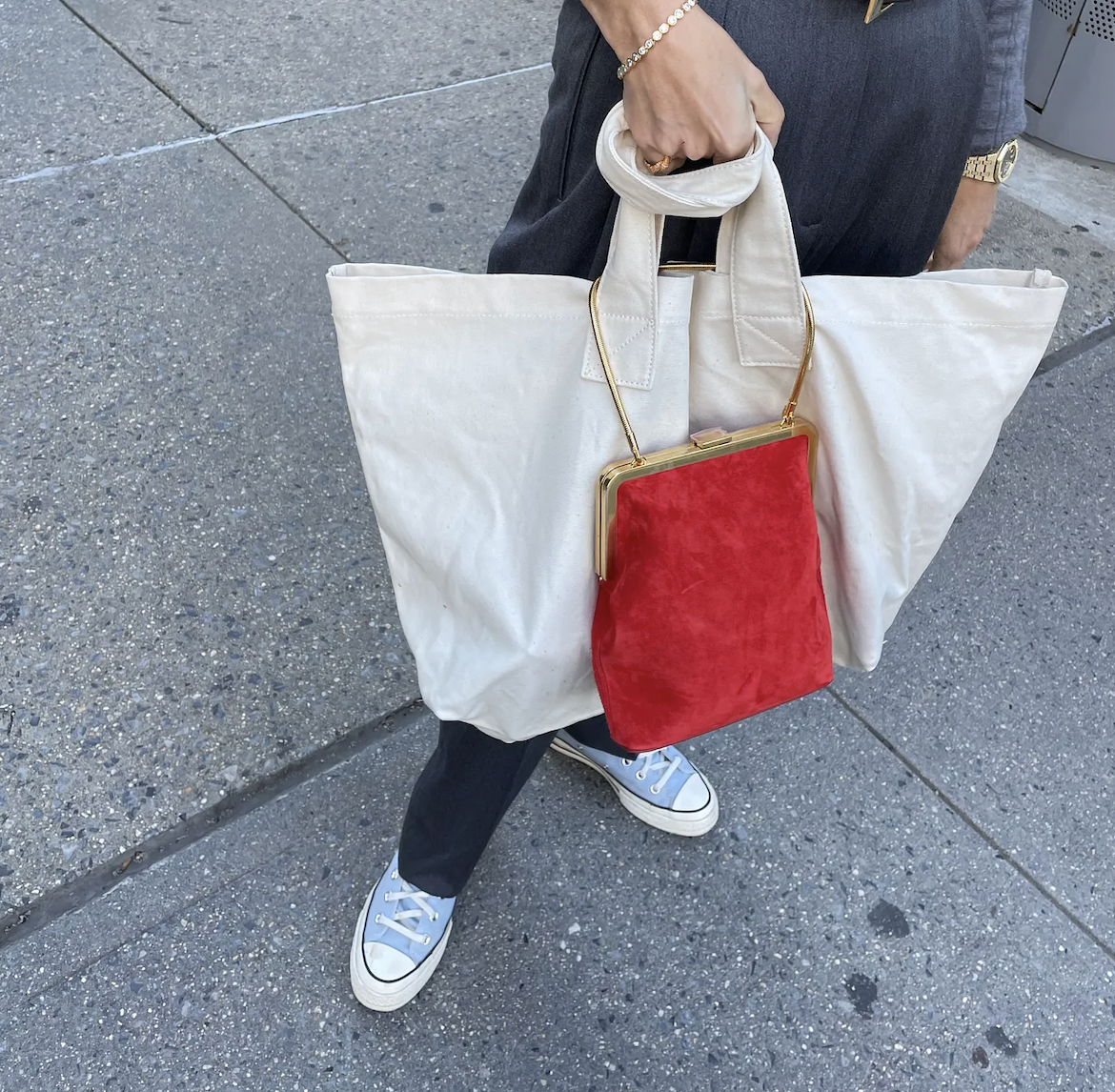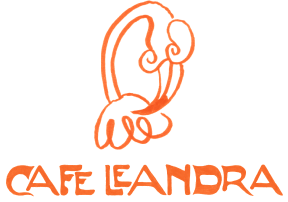Building, deconstructing, and rebuilding with clothes
Did you follow the shows in Europe? In Milan, there was a lot of chat about Prada— most people loved it and some people didn’t. The argument was that it usually takes a minute to fully get the ideas, that her magic is in that process but this show was more digestible, easy to love immediately. It was also a little more structured (masculine?), which a friend pointed out is probably because of the influence of Raf Simons, who co-creates the collections with Prada now. His hand is definitely harsher than hers, or heavier at a minimum.
But no one does color like Raf. Together, I think they work so well but I can see how it is kind of jarring for Prada stans who have always admired the illusion of a delicate faintness that she constructs so masterfully to underpin her untamed fire.
The other big hitter was Matthieu Blazy, whose been designing for Bottega Veneta for three seasons. He took over from Daniel Lee (who is now at Burberry) and previously worked with Phoebe Philo at Celine. Before that, he spent over a decade designing with the aforementioned Raf Simons and Peter Mulier (now at Alaia and kind of becoming the most important designer to industry people; everyone is nuts about his shoes (!), and up close, the clothes are magic too — I suspect it’ll be another season or two before the chiseled and cool private school moms are cocktailing in Alaia as well).
Editorial vs. commercial success
When I first started covering shows, it took me a while to understand the difference between what constituted an editorial success and what defined a commercial one. With an editorial success, a poetic and often esoteric message is usually communicated to the thrill of a writer’s pen. When the clothes burst with interesting or emotional ideas, writing around them is a creative pleasure. With the commercial successes, the recaps are often less interesting to describe in detail because the ideas are less provocative (the commercial collections are often more grounded in what the people outside of the rooms where the shows take place want to wear), but they do offer the service of delivering a glance at the season ahead. They’re often also practically inspiring in that they probably piggyback off of the trends you’ve been wearing already.
They can provoke emotion too, mostly through a sort of sense of feminine community: girlfriends gabbing about which looks they’d want to wear where.
Ultimately, though, most people outside of the industry — even those who love to shop and follow shows don’t really pay much attention to what has to be said on the significance of a collection. I’m not even sure how many people actually follow shows, how much they care that they’re going on.
This is both so surprising and unsurprising to me because when I was still writing Man Repeller, the two months a year that new “mainline” collections presented were the most important of the seasons. They were the highest energy in both stressful and inspiring ways but could feel kind of disappointing too — whenever the site became too Fashion Week-centric, which I loved, traffic took a pretty big hit. I think often, I forgot that I was writing for an audience that wasn’t on the inside, but that I also wanted to appeal to insiders, sound smart, and like I knew ~what was going on.~
You totally forget that outside of the bubble you’re in, there is this whole other world and within in, no one really cares, or frankly knows, what you’re crushing yourself for.
I think I probably intuited this then too — that no one outside of the industry cared all that much about the shows — but it never changed how much they meant to me. How much they still do!
I actually don’t think fashion shows were supposed to be for people outside of the industry (and, I suppose, megafans, which pre-MR I fully identified as, and now, post-MR kind of do again — who took it up themselves to follow them), but social media really confused that. Maybe there’s a course correction in progress right now. I barely see coverage in my feeds unless I seek it out.
Finding oneself in clothes
I like the shows because the ideas are delivered in a communication style that I value, admire, and for the most part, understand. It’s a perfect example of when you take a complicated thought or feeling, or maybe it’s even a painful one, and you deliver how you’ve worked through it with these beautiful structures called clothes. Often the collections can help you (me?) zoom out and contextualize some other big feelings.
Example: I have been so into all the feminine and soft/ethereal silhouettes on the runway this season. It is a departure from the usual blazers and ties and more masculine or closed-up cues I tend-to-tend towards and I think that reflects this burgeoning softness that’s been growing bigger in me since I’ve become a mother.
Like it makes me think about how much I’ve changed — or, I don’t know that people actually change so much as these different dormant qualities that are already within us activate, exacerbate or expand as we move through life and the different people/situations that come up help to bring them out.
Somehow thinking about it within these terms feels more steadying to me than the possibility that a person could literally change. It’s more like, you learn that there are all these different parts there within you, all the time. Some are awake and some are sleeping. Some fall asleep and some wake up. The empowering piece as I see it is that eventually, you also learn that you have the power to turn on and off these different parts at your will.
But on the softness: I’m surprised to find how much I appreciate the softness that I am getting to know, that I’d have never chosen for myself as a desired trait of my self-definition. Before becoming a mother, I internalized it as a sort of weakness.
What I see most acutely now is that it takes a great deal of strength and the sheer force of feminine will to not just expose but to own up to your own sensitivity or softness. To lay it out and even celebrate its presence.
I will say though that the ties at Valentino drove me crazy in the best way.
I loved this detail from Blazy’s Bottega, too (and New York’s own Danielle Kallmeyer played with ties too).
In particular, I loved her tie paired with a straight, mid-length silk skirt. It’s cool when clothes can show you something about yourself that you might not yet see on your own, and reinforce what you already know in a matter of moments, no?
When the looks are less personal, too — like when they don’t ask you to reflect inward, to but reflect on what is around you, that’s great. I was looking at Demna Gvasalia’s collection for Balenciaga online on Sunday. The setting was a departure from the theatrical runways he has been serving the past few seasons, and the clothes were more pared back: a fleet of jackets and slit pants and skirts consumed the first half of the show, while familiar micro floral prints were the middlemen.
Florals like this, which I think he first showed for Spring 2017?, are my favorite contribution of his to Balenciaga. The end of the show featured beautiful dresses — just well-made, elegant, ornate dresses. It’s clear that he used this collection to reconnect to what got him into this position, as CD at Balenciaga, in the first place. That his own brush-up with “the mob” and cancel culture (in November of last year, he got in quite a bit of social trouble for a campaign that purported to idealize child pornography) required him to go back to what drew him to fashion, analyze whether he’d fight for the legacy he’s building and ultimately, to reconnect to his purest love: making clothes.
It is an act of true generosity, in my view, to allow an audience to witness this process.
What else is going on? Ah, Loewe. That show took place last week, I think on Friday or Saturday, and one thing I often love about Loewe is the way Jonathan Anderson merges his understanding of what it takes to produce an editorial success and to drill down on how to make it commercially viable too.
I think the winning combo for a collection’s success is a blending of editorial interest and commercial thrill. On sites now are those delightful Barbour style coats he did for Spring 2023 and they’re even more interesting to conceptually play with now than they were when they showed in September.
I can imagine that those velvet floral shoes, the feather pants and the blurry trompe l’oiel dresses will produce the same effect next season.
You know what the other thing is though? The man’s got a sense of humor!
I love seeing that in fashion.
Meanwhile, Chanel and Miu Miu closed the season in Paris yesterday. I love that collection season ends with two female designers.
After Karl Lagerfeld died, his right hand, Virginie Viard took over as creative director. Her version of the house is a bit softer than his was — but also takes more risks in my view, to the extent that: it’s more concise (his shows often spanned between 90 and 100 looks, while hers, which are still big, are more like between 60 and 70 looks), leans less on the basic silhouettes and structures that often make customers dry heave (tweed jackets! Multiple bags factored into single looks! Tons and tons of different shoes!) and conceptualizes what a Chanel woman wants to wear as opposed to just look like to geuinelyliveher life.
There are so few brands heralded by women within fashion who command the kind of cultural cache that Chanel and Miu Miu do. The big difference, I’d say, between the former and the latter is that Chanel has created its own world.
It kind of runs its own culture — like even if Virginie Viard is designing a more realistic template of clothes to actually wear when compared to Lagerfeld, those clothes are still for the inhabitants of this one, particular world.
Miu Miu exists within the broader picture, and what was most exciting to me about this season were the little styling techniques that seemed to celebrate so much of the feminine experience.
I got at this a little bit yesterday, in one of the tangents about how the model at The Row was clutching her coat and how realistically female it felt — here at Miu Miu, the model at left has her sweater tucked into her tights which is a thing I suspect lots of women do (guilt!) when they’re wearing outfits that require tights.
I love that it’s part of the look — and choose to believe it celebrates the wits of a woman navigating her body in clothes.
Then there’s the funny early 2000’s way that the models were clutching their bags.
We all used to do this! Remember? There’s a Mrs. Maisel energy about it on one hand — that like, ball-busting mother-in-law who storms into her daughter and son-in-law’s home unannounced to tell everyone what’s what with her pillbox hat and shawl-collar fur coat and tightly-wound arm bent like a hook to hold up her bag just like this.
But then also, doesn’t it remind you of the beginning of reality TV stardom, and all those paparazzi pictures of the girls like Lindsay Lohan or Paris Hilton or Tara Reid or the cast of The Hills who ran around LA keeping tabloids in business? In some ways, if you think about it, that era really launched The Status Bag. Or at a minimum made more mass its presence in fashion.
I really love seeing culture build, deconstruct then rebuild itself in all these ways. It’s almost like the same process of finding, losing, and refinding oneself. There’s something so digestible and exciting about it in this context.
In sum though, I have to say: I can’t wait to see what Phoebe Philo has up her sleeve.
Signing off yours,
Leandra





